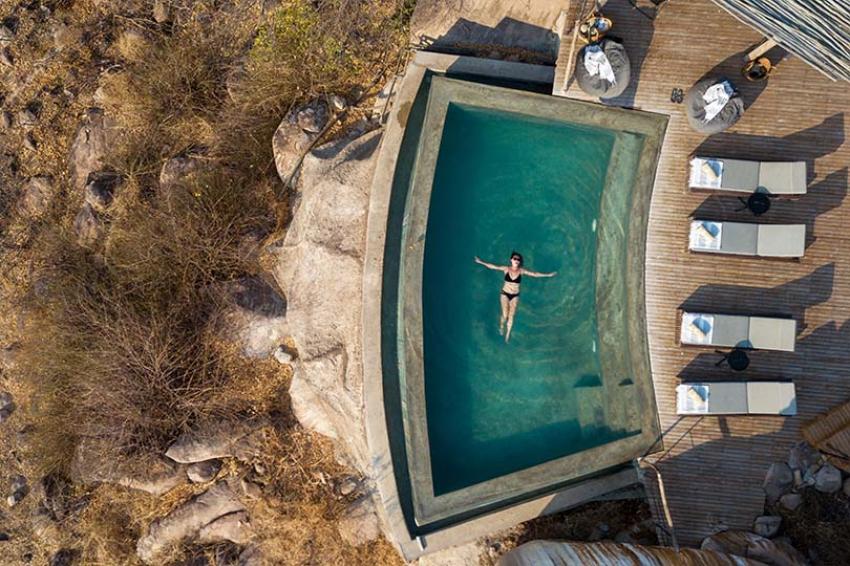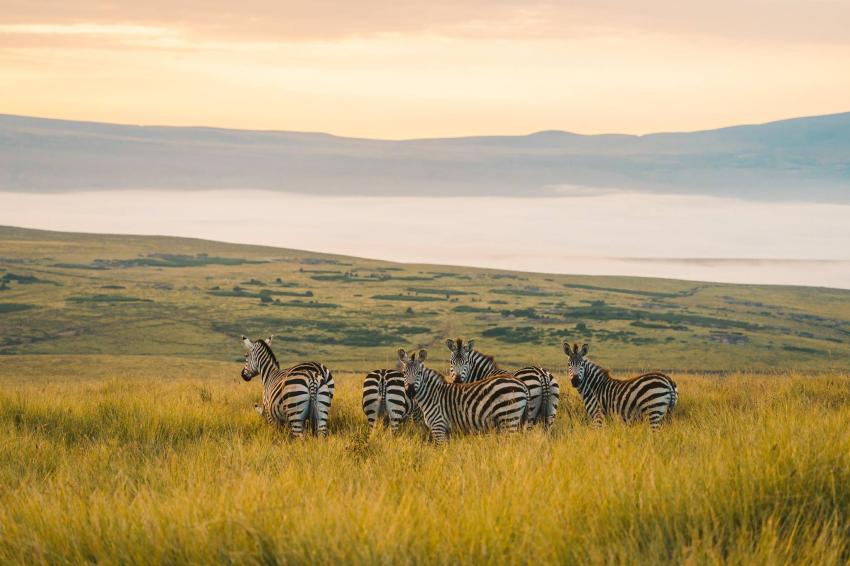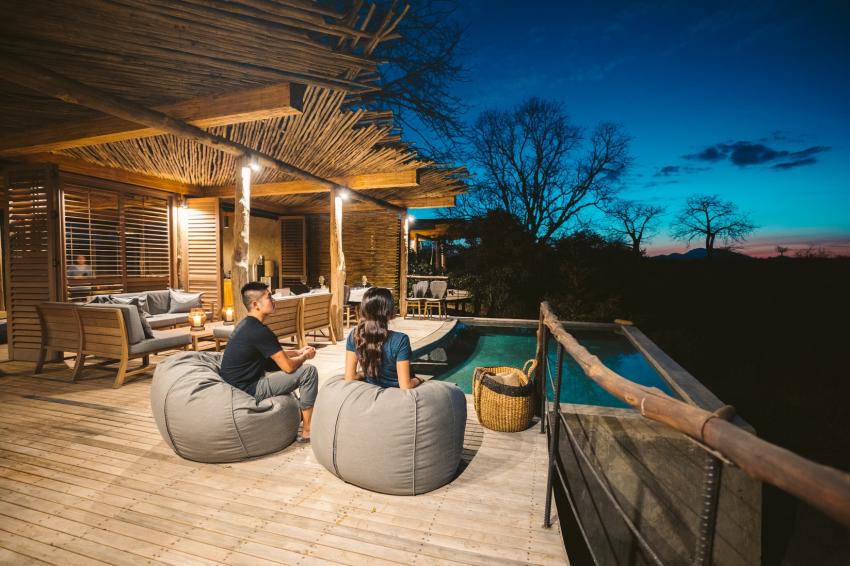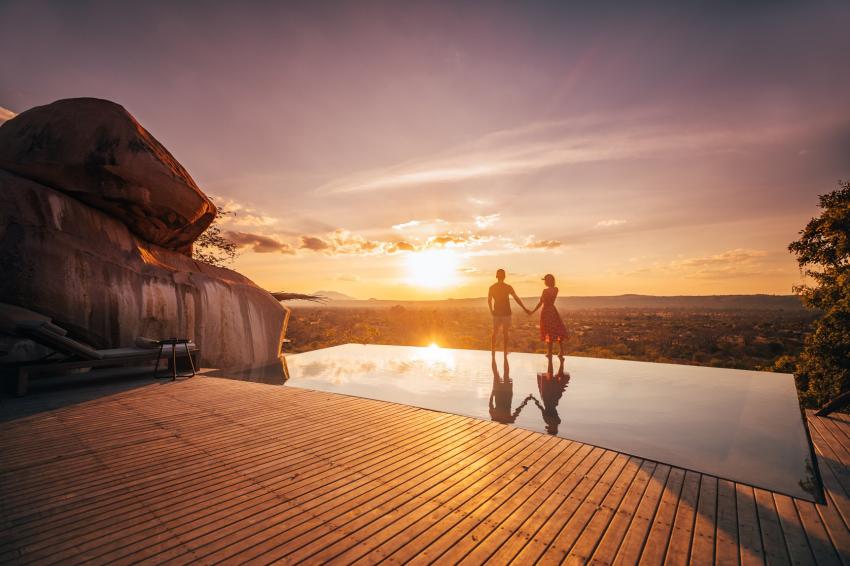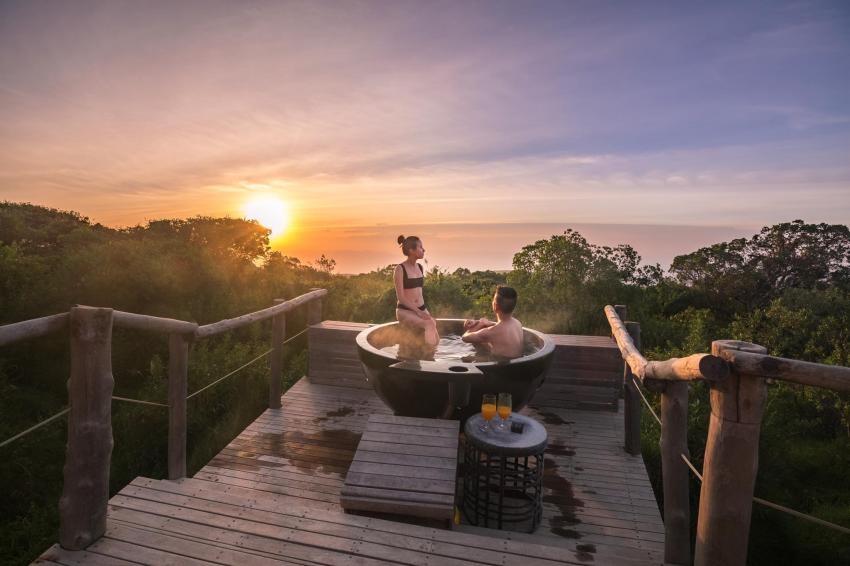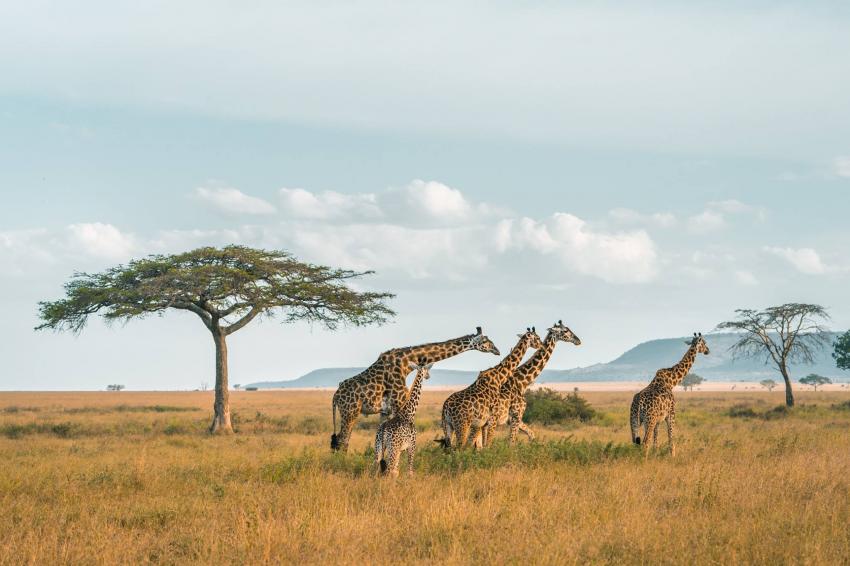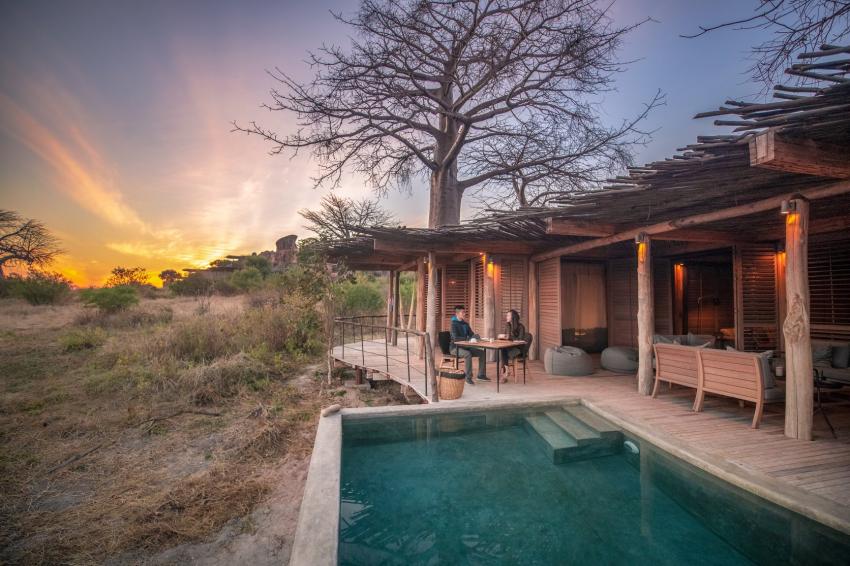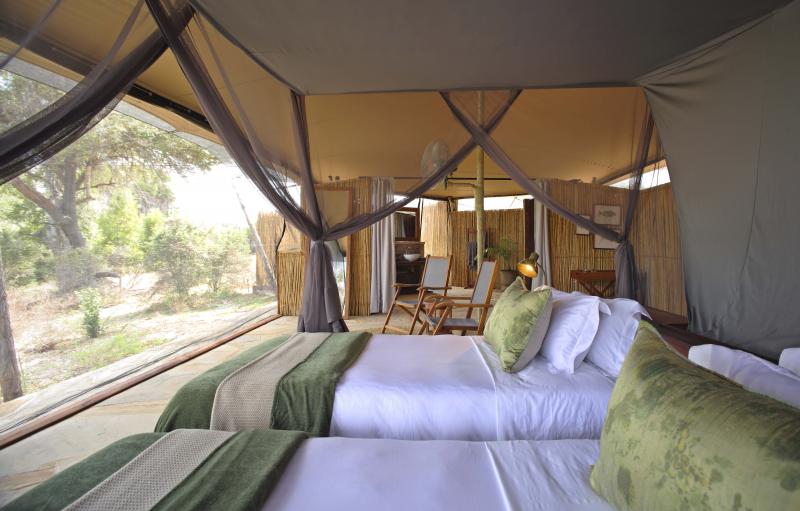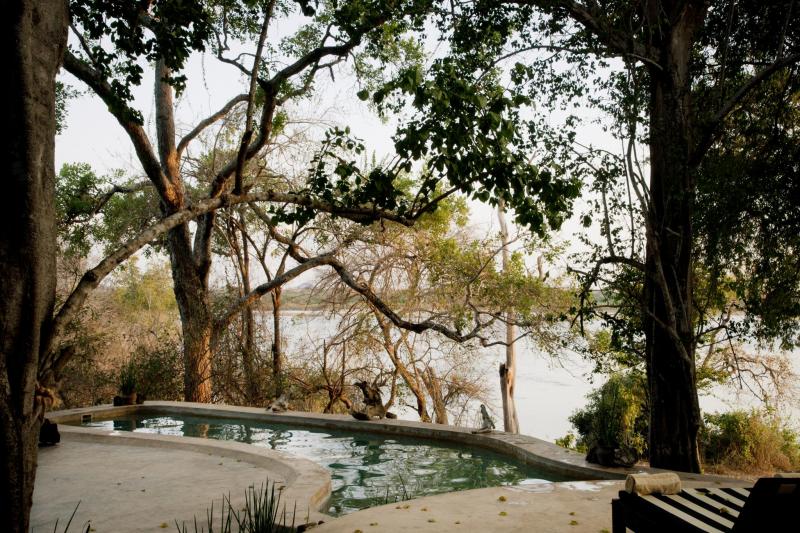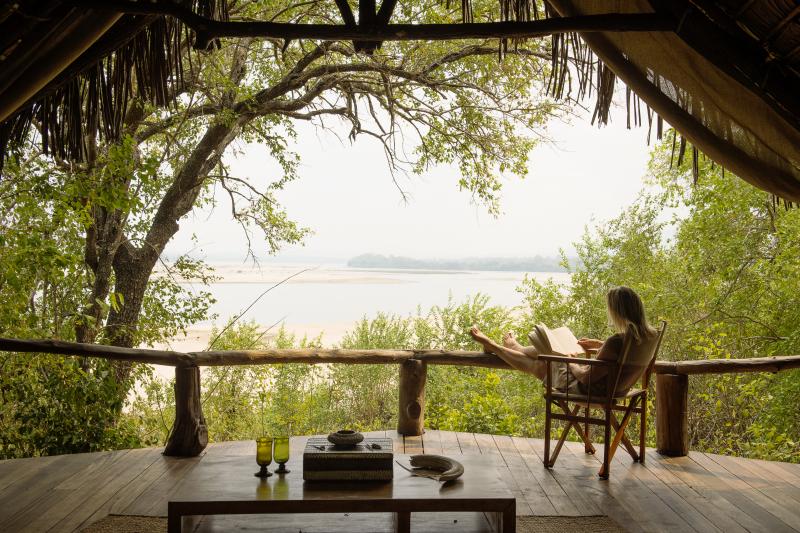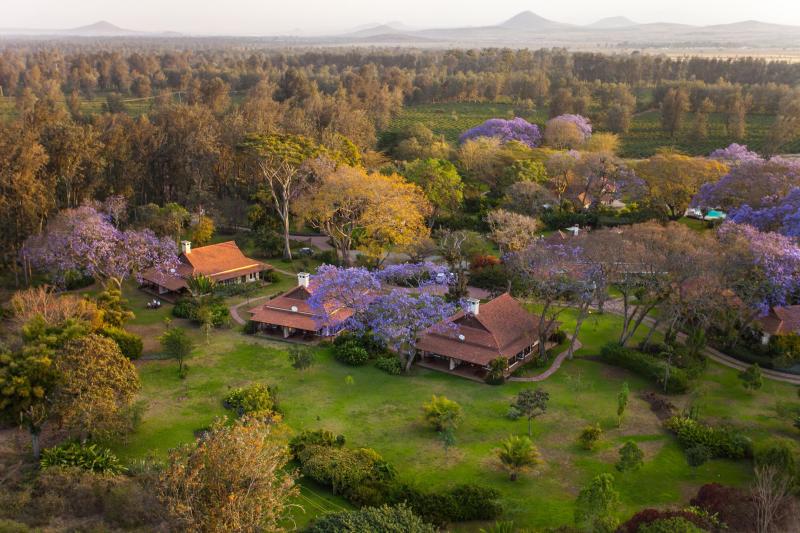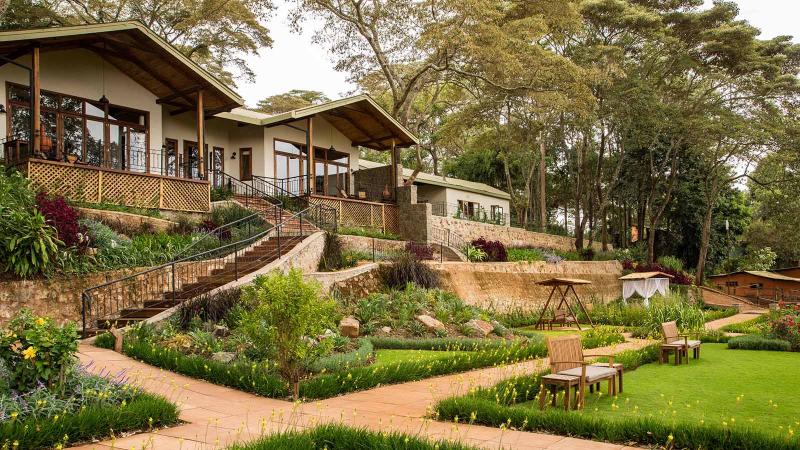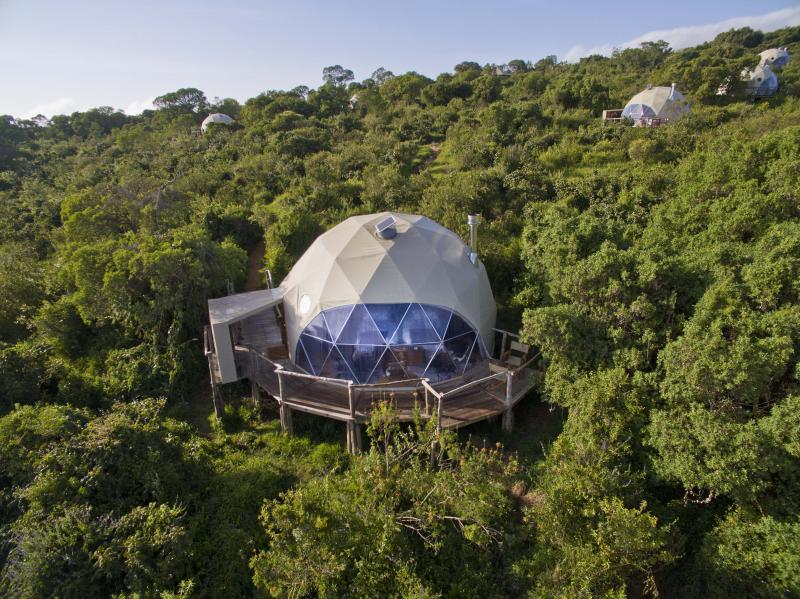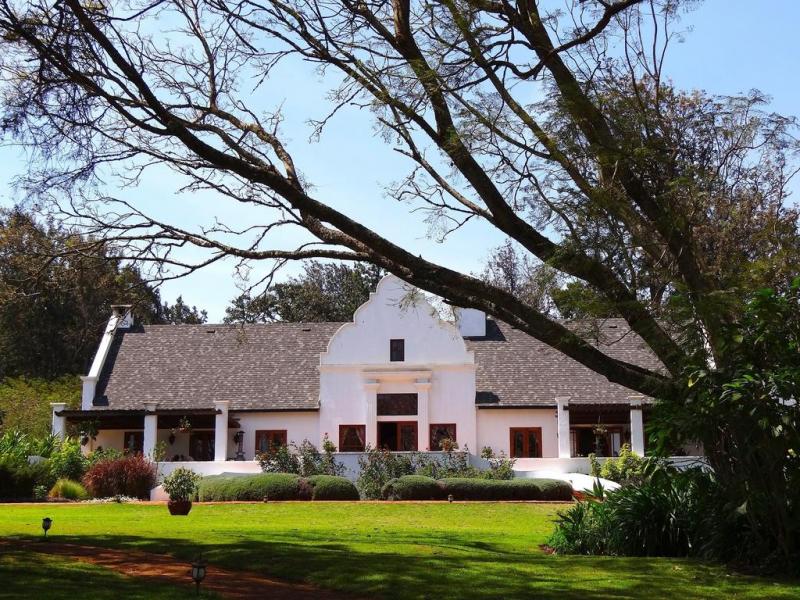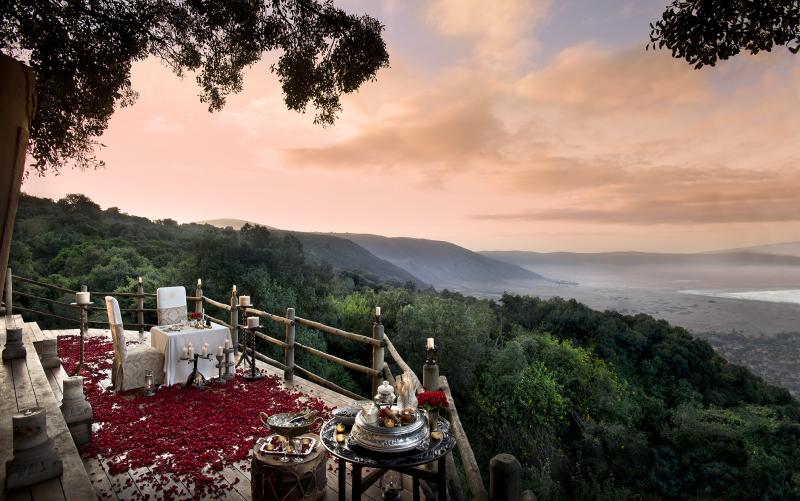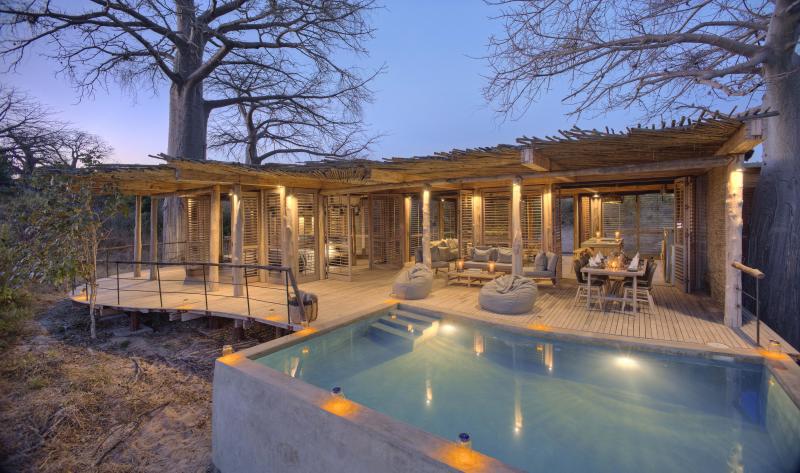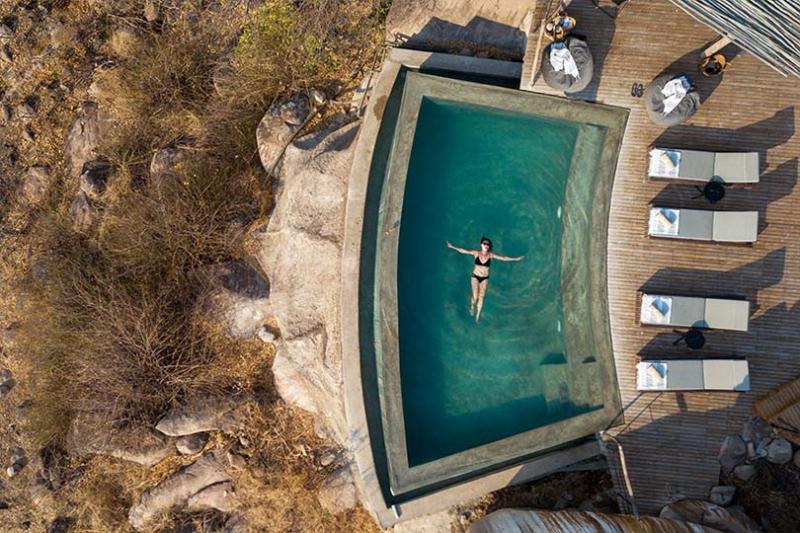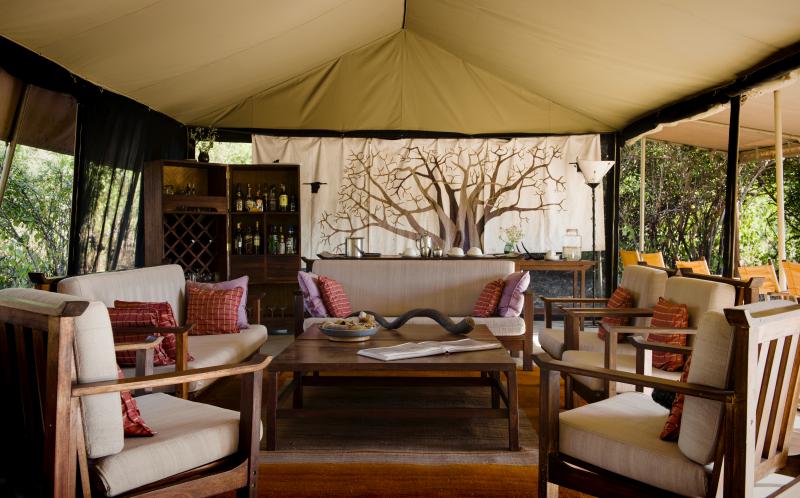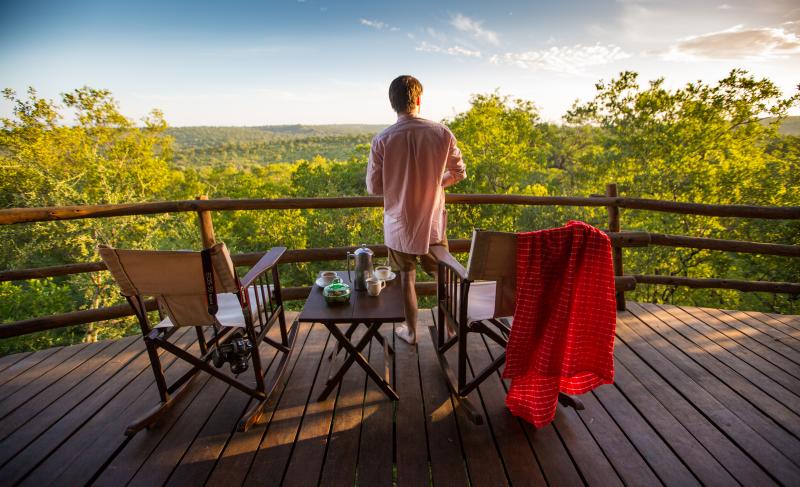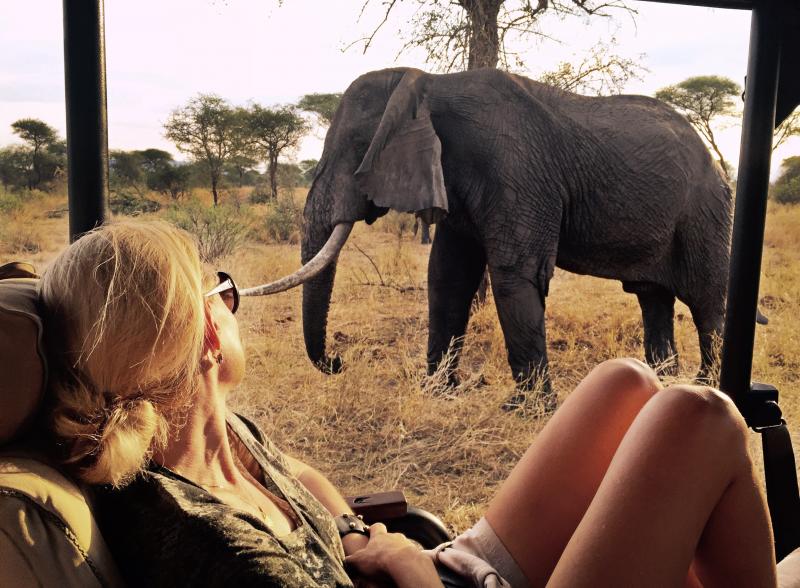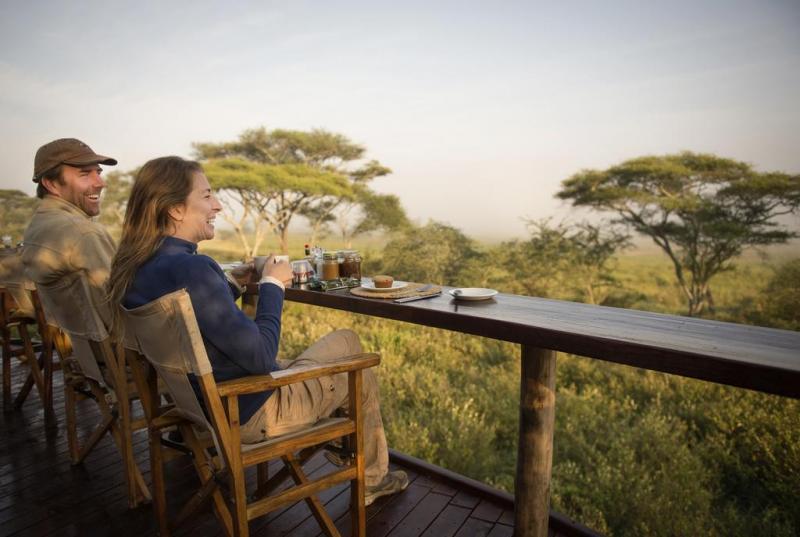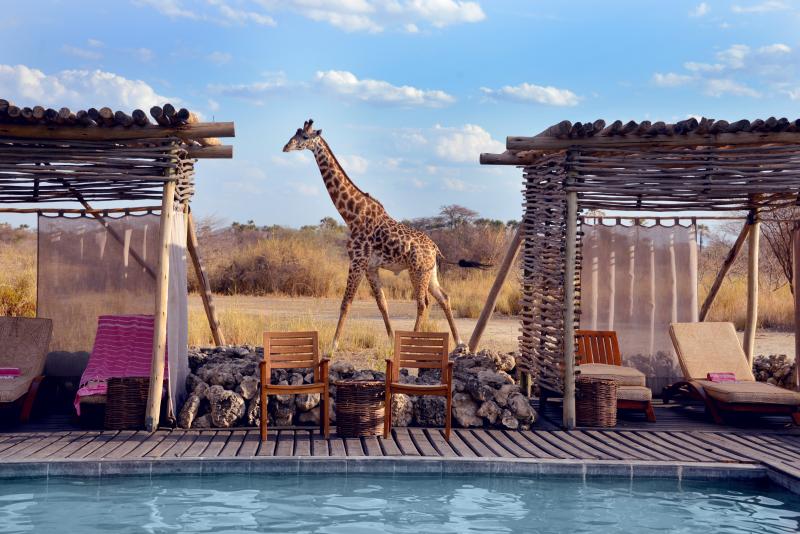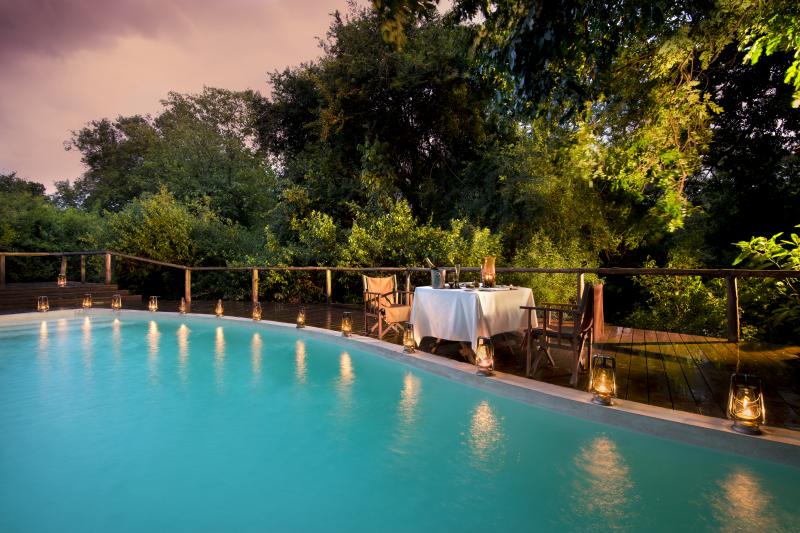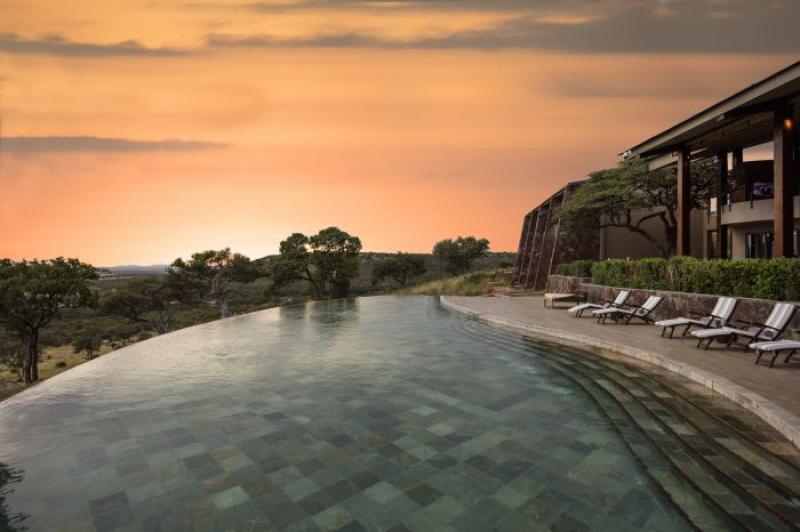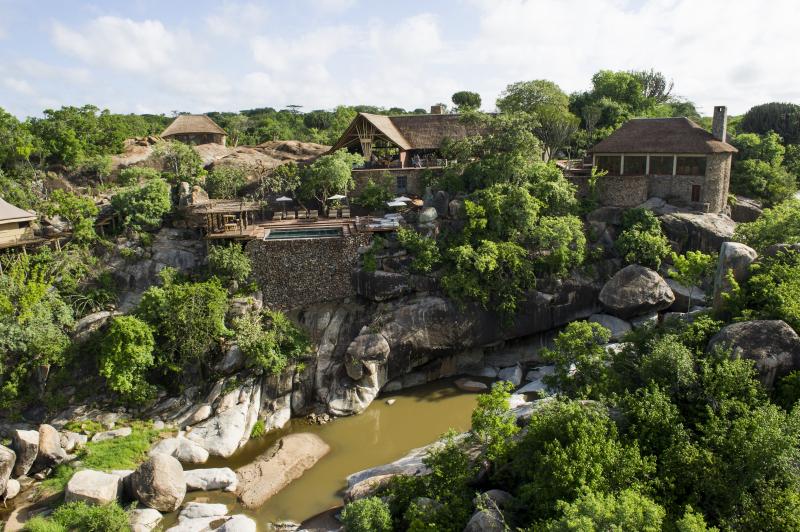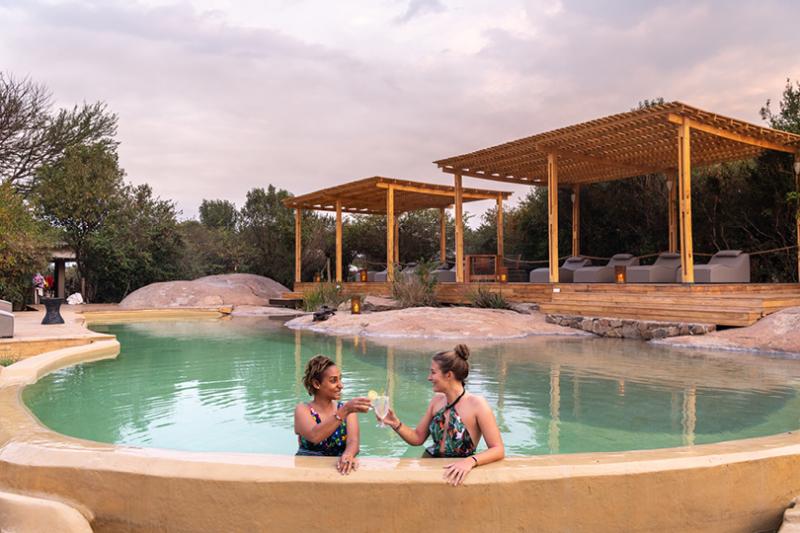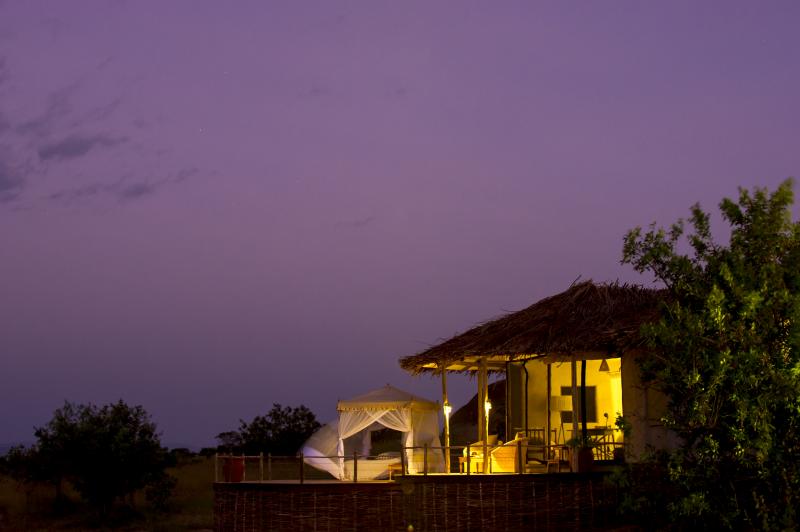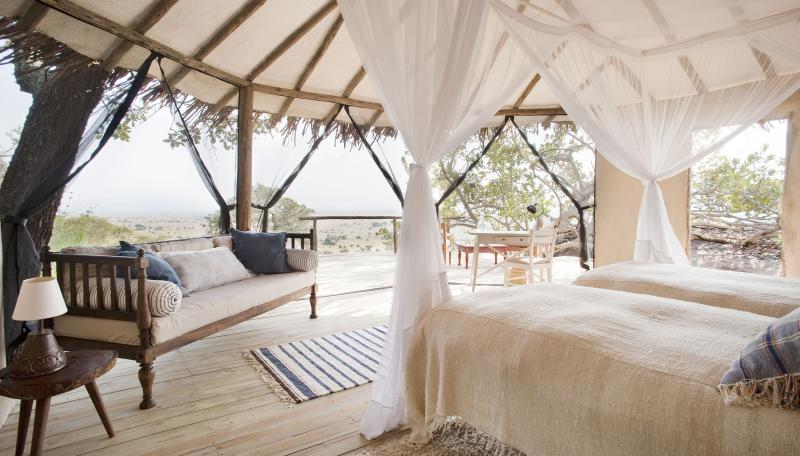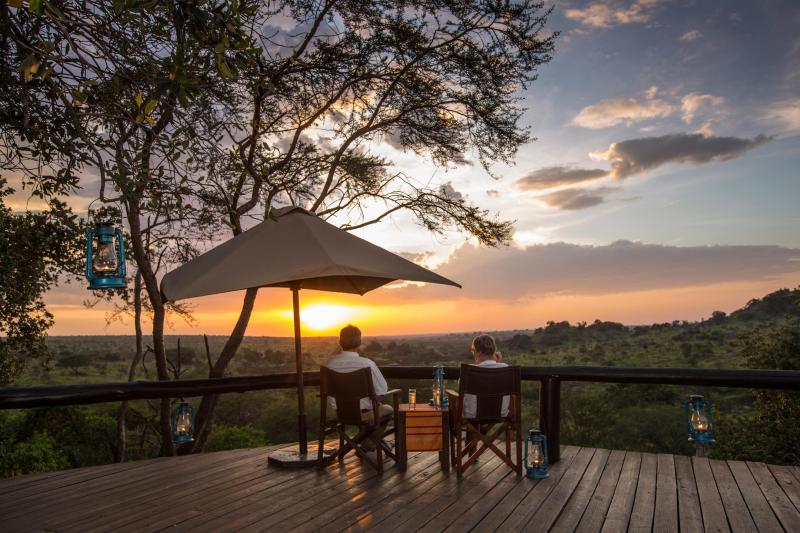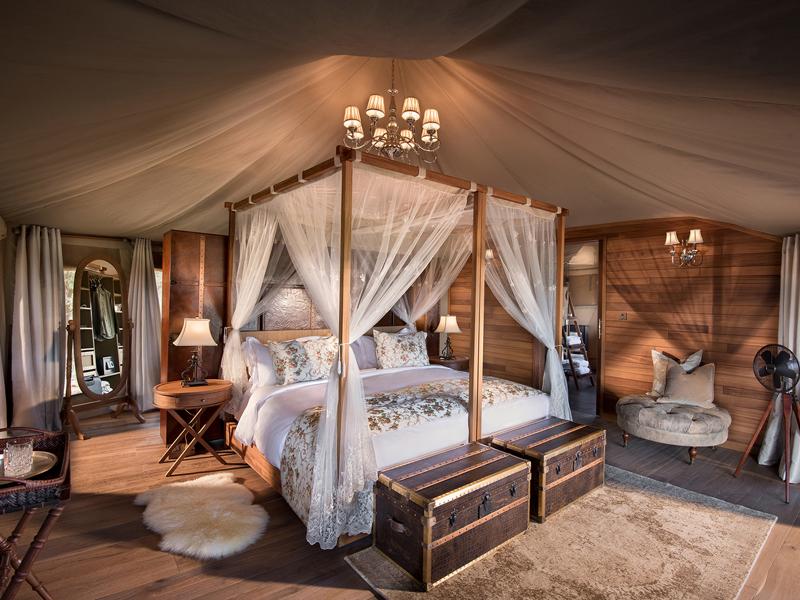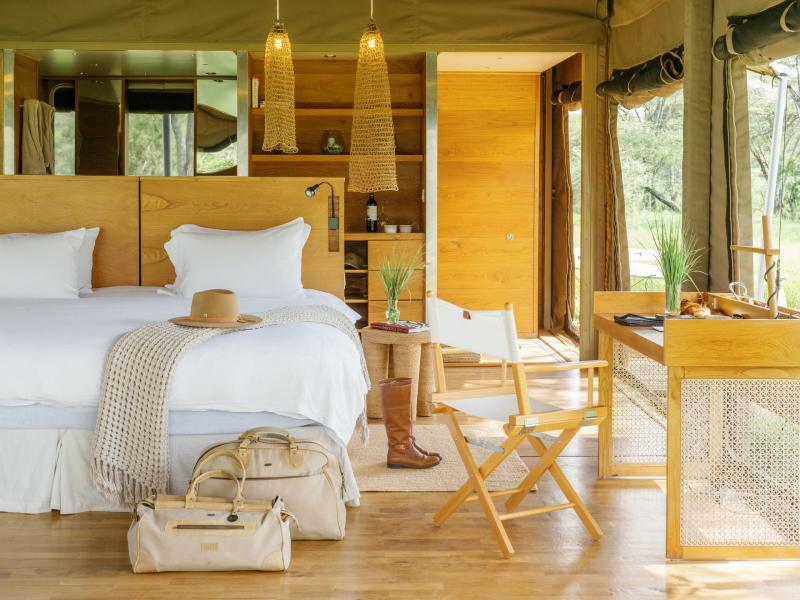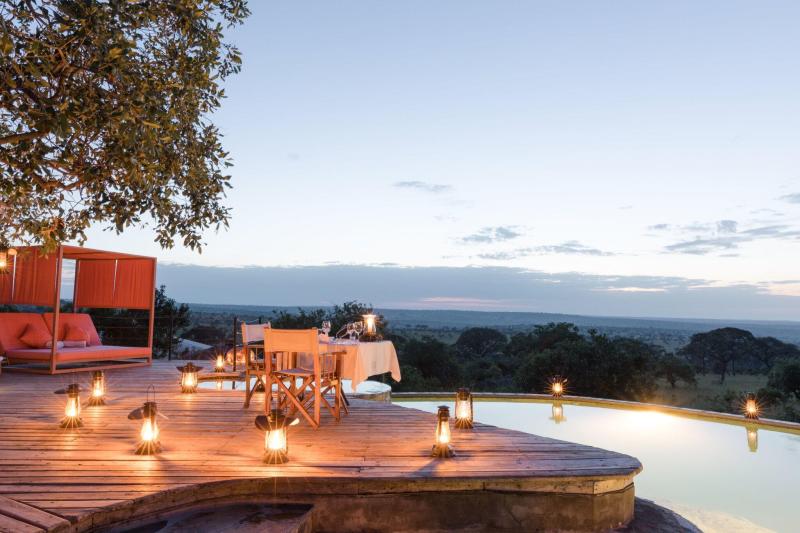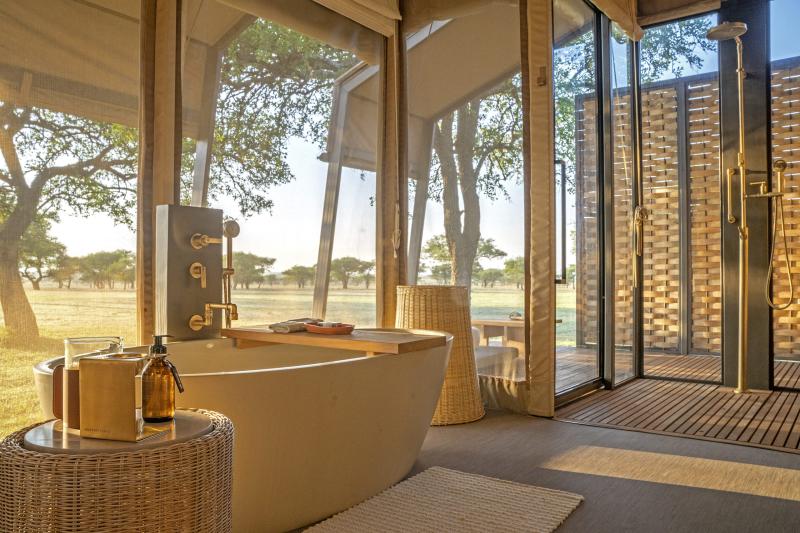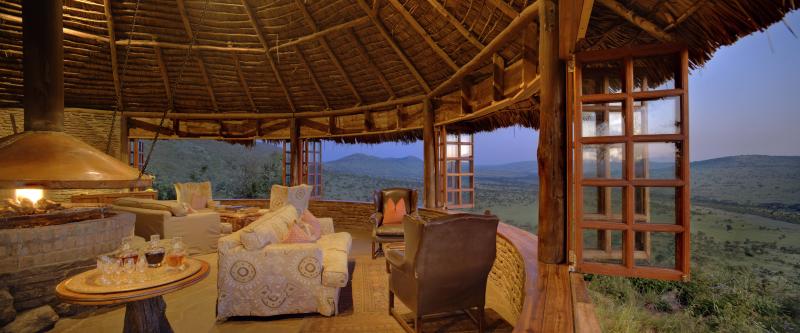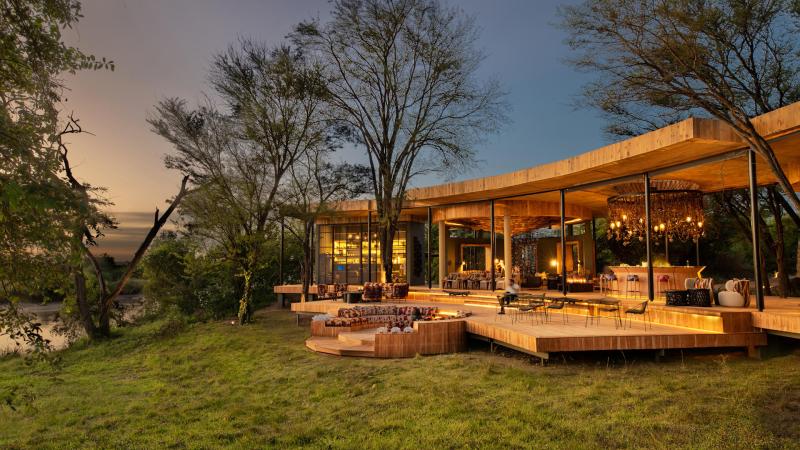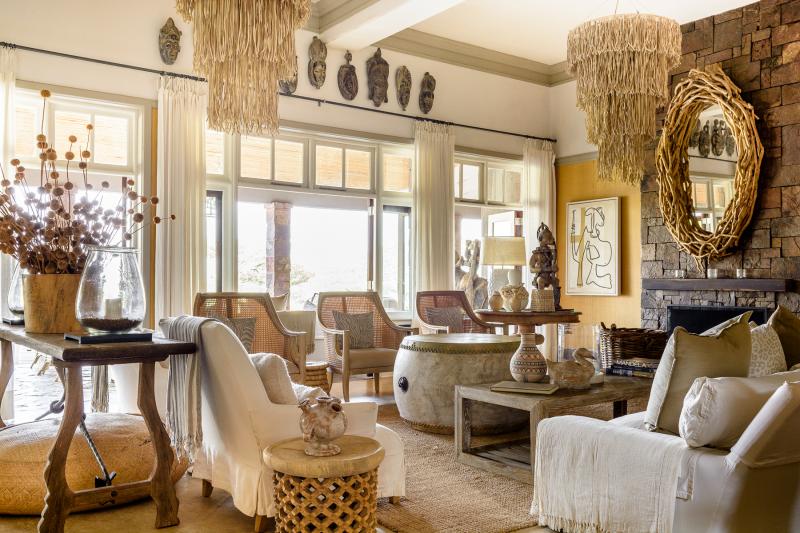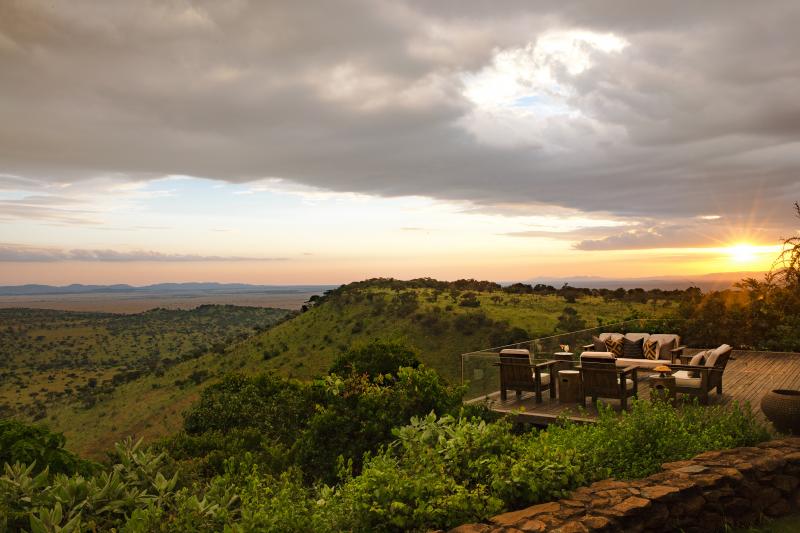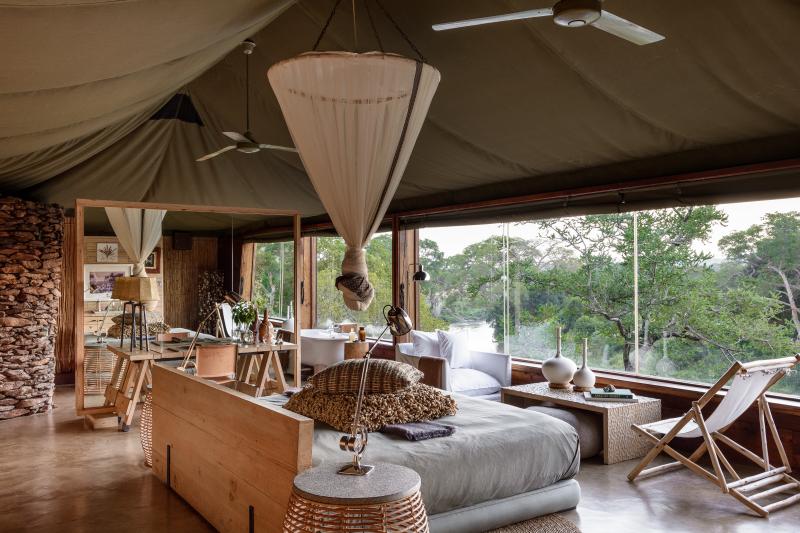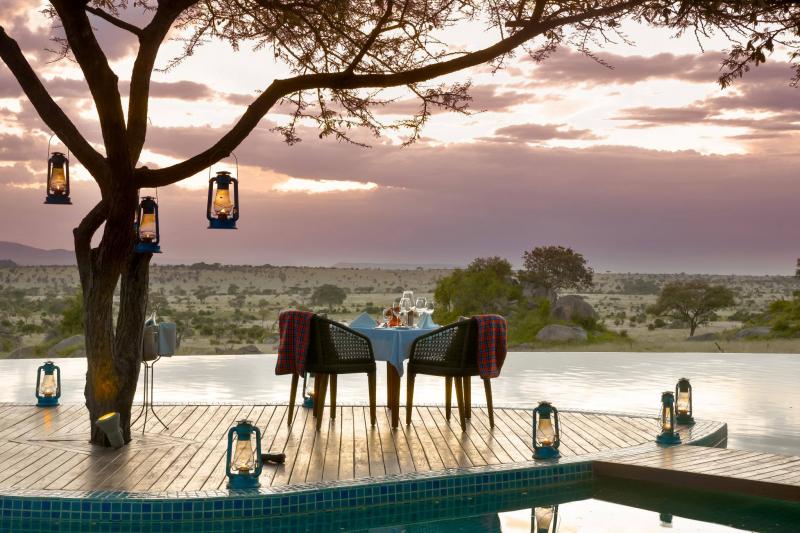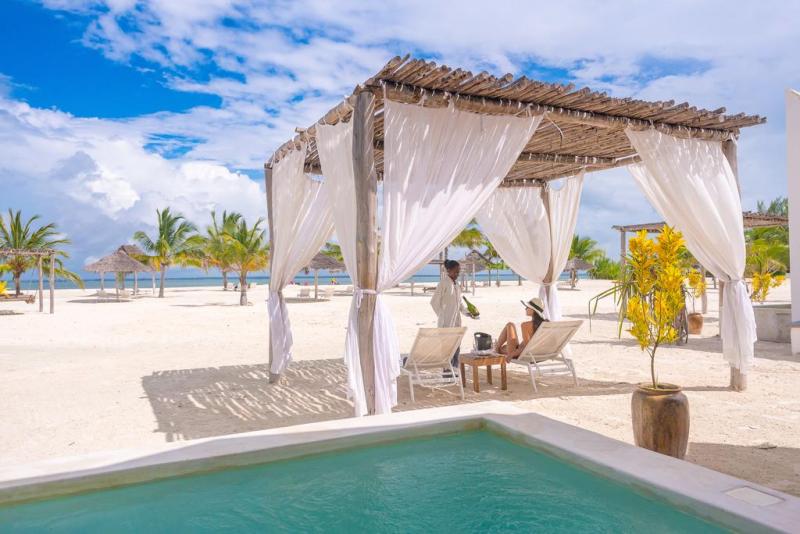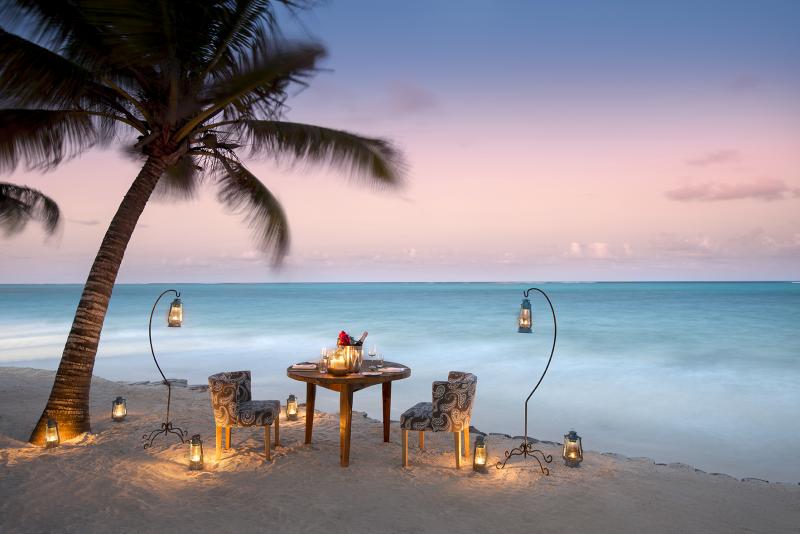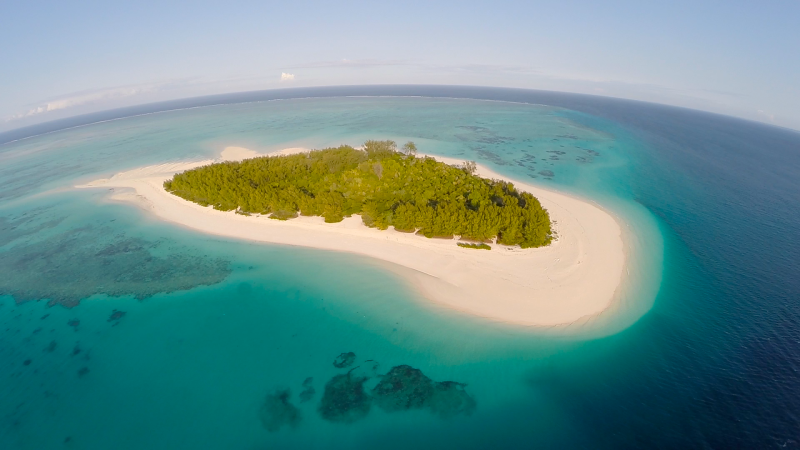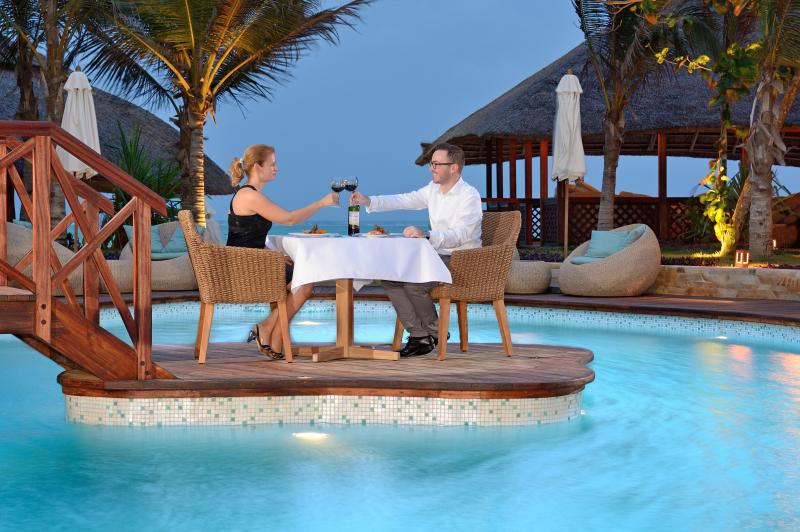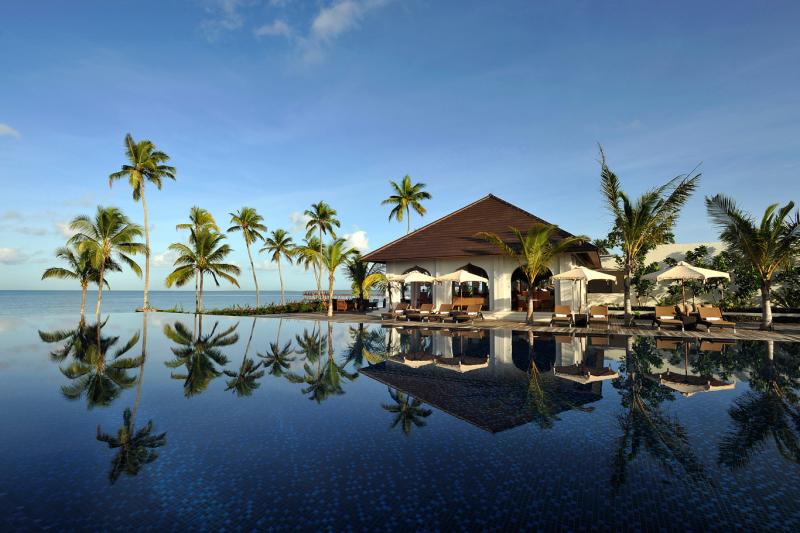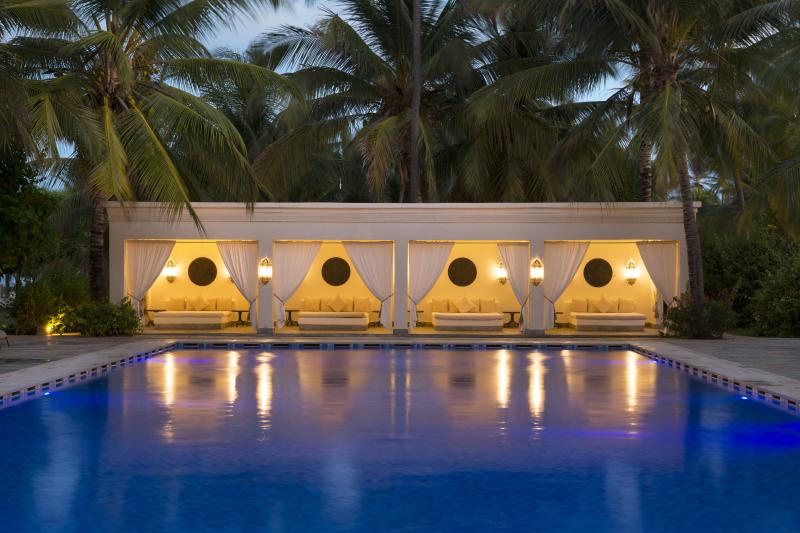Home to some of East Africa’s most iconic wildlife-viewing destinations, Tanzania is synonymous with safari adventures. It’s here that you’ll find the Serengeti National Park, Ngorongoro Crater and little-known gems such as Lake Manyara, as well as the exotic island of Zanzibar and Africa’s highest peak - Mount Kilimanjaro. Convenient international air connections to the country and daily domestic flights make travel here a breeze, ensuring you can have the best safari in Africa.

Tanzania boasts an outstanding choice of luxury lodges and camps where you can spend your days game driving, hot air ballooning and on walking safaris before returning to sparkling infinity pools and gourmet dining experiences. Whether you’re venturing along the legendary Northern Circuit, getting off-the-beaten-track on the Southern Circuit or heading to the island of Zanzibar, here’s our insider guide on where and when to stay on a Tanzania safari.
Selous Game Reserve

Sprawling across more than 54,000 square kilometres, the Selous Game Reserve has been designated as a UNESCO World Heritage Site for its exceptional wildlife diversity. Aside from large populations of zebra, giraffe and around 4,000 lions, you can also expect to see hippos, rhinos and some of the more than 440 bird species that have been recorded within its bounds.
Roho ya Selous
Located at the very heart of the Selous Game Reserve, this stylish camp features just eight canvas tented rooms that offer all the creature comforts you desire.
Kiba Point
Featuring just four large, open-fronted rooms, this lodge is an exclusive retreat, with private plunge pools and a central thatched mess among the facilities.
Sand River Selous
Situated in the northern part of the Selous Game Reserve, Sand Rivers offers luxurious safari accommodation in stone and thatched cottages on the banks of the Rufiji River.
Arusha National Park

Dominated by the peak of Mount Meru, Arusha is one of the smallest national parks in Tanzania and can easily be visited as a one-day safari tour from the Tanzania safari capital, Arusha. It encompasses lush highland forests, shallow alkaline lakes and extensive grasslands that support a huge diversity of wildlife.
Arusha Legendary Lodge
Consisting of just 10 garden cottages, this luxurious lodge nestles in a tropical garden that’s surrounded by a working coffee farm on the outskirts of Arusha.
Arusha Coffee Lodge

Nestled amidst acres of coffee bushes, this popular lodge features 30 plantation houses that are spread around an early 20th-century colonial landowner’s home.
Ngorongoro Conservation Area
 Protected as a UNESCO World Heritage Site, the Ngorongoro Crater’s walls act as a natural enclosure for a staggering diversity of wildlife, including the “Big 5”, Grant’s zebra and black rhinoceros. The wildlife-rich Ndutu Lake area is renowned for its sightings of cheetahs and lions while more than 500 bird species have been recorded in the Ngorongoro Highlands.
Protected as a UNESCO World Heritage Site, the Ngorongoro Crater’s walls act as a natural enclosure for a staggering diversity of wildlife, including the “Big 5”, Grant’s zebra and black rhinoceros. The wildlife-rich Ndutu Lake area is renowned for its sightings of cheetahs and lions while more than 500 bird species have been recorded in the Ngorongoro Highlands.
Gibb’s Farm Lodge
One of the most famous properties in the Ngorongoro Highlands, Gibb’s Farm Lodge features charming cottages nestled in working gardens that support the property’s farm-to-table dining experiences.
The Highlands Ngorongoro
Positioned on the slopes of the Olmoti volcano, this unique property boasts eight canvas-and-glass domed suites that are inspired by the design of traditional Maasai bomas.
The Manor at Ngorongoro
Set within a Cape Dutch-style property, The Manor at Ngorongoro is a high-end lodge that features a handful of luxury cottages overlooking the 1,500 acre Shangri-La Coffee Estate.
&Beyond Ngorongoro Crater Lodge
Offering incredible views across the Ngorongoro Crater, this luxurious lodge comprises three intimate camps that have been described as where Versailles meets the Maasai.
Ruaha National Park
 With the Great Ruaha River carving through its heart, Ruaha National Park is the largest national park in the country and home to a variety of big-game predators that include lions, leopards and cheetahs. Aside from its large numbers of buffalos, giraffes and sable antelope, Ruaha also includes the bird-filled wetlands of the Usanga Game Reserve, which has been recognised as an Important Birding Area.
With the Great Ruaha River carving through its heart, Ruaha National Park is the largest national park in the country and home to a variety of big-game predators that include lions, leopards and cheetahs. Aside from its large numbers of buffalos, giraffes and sable antelope, Ruaha also includes the bird-filled wetlands of the Usanga Game Reserve, which has been recognised as an Important Birding Area.
Jabali Private House
Ideal for groups or families, this private residence features luxurious living spaces, a sparkling swimming pool and three bedrooms set amidst Ruaha’s iconic baobab trees.
Jabali Ridge
Nestled amidst rocky boulders, this high-end property features just eight suites, an infinity pool, and a spa where you can indulge after a day of game drives and walking safaris.
Kwihala Camp
Offering a frontier-style experience, this intimate, six-bedroom camp features a central lounge and dining area that’s on the doorstep of all Ruaha National Park’s wildlife action.
Tarangire National Park

Dotted with majestic baobab trees, Tarangire National Park is one of the Northern Circuit’s underrated gems and is named for the river that serves as its lifeblood. Aside from wildebeest, zebras, and giraffes, it’s renowned for its huge herds of elephants and regular sightings of elusive leopards and cheetahs.
Tarangire Treetops Tented Camp
On the path of an annual elephant migration, Tarangire Treetops features a series of elevated treehouses set amidst a landscape of baobab-studded hills.
Little Chem Chem
Located on the eastern side of the Chem Chem - Burunge Wildlife Management Area, this intimate camp offers six vintage-style tents that exude an “Out-of-Africa” atmosphere.
Oliver’s Camp
Inspired by the trailblazing camps that pioneered the early days of safari travel, this luxurious camp is situated in the remote southeastern part of Tarangire overlooking the flood plain of the Minyonyo Pools.
Lake Manyara National Park
 Described by Ernest Hemingway as “the loveliest I had seen in Africa”, Lake Manyara National Park stretches for around 50 kilometres along the base of the Rift Valley escarpment. It centres around a soda lake that attracts thousands of flamingos while its surrounding forests provide habitat for blue monkeys and baboons.
Described by Ernest Hemingway as “the loveliest I had seen in Africa”, Lake Manyara National Park stretches for around 50 kilometres along the base of the Rift Valley escarpment. It centres around a soda lake that attracts thousands of flamingos while its surrounding forests provide habitat for blue monkeys and baboons.
Chem Chem Safari Lodge
On the eastern edge of Lake Manyara, this luxurious “sunset camp” is situated on an exclusive concession and blends in with the unfenced wilderness that surrounds it on all sides.
Lake Manyara Tree Lodge
Cradled in the boughs of ancient mahogany trees, this majestic lodge features 10 stilted treehouse suites overlooking a forest boma that’s lined with traditional dugout canoes.
Serengeti National Park
 The Serengeti is one of the world’s most iconic safari destinations and provides the backdrop to the Great Wildebeest Migration as millions of wildebeest and zebras make the long journey north in pursuit of fresh grazing pastures. It’s home to the “Big Five”, hippos, impala and Maasai giraffe, as well as vervet monkeys, olive baboons and black-and-white colobus that inhabit the lush forests along the Grumeti River.
The Serengeti is one of the world’s most iconic safari destinations and provides the backdrop to the Great Wildebeest Migration as millions of wildebeest and zebras make the long journey north in pursuit of fresh grazing pastures. It’s home to the “Big Five”, hippos, impala and Maasai giraffe, as well as vervet monkeys, olive baboons and black-and-white colobus that inhabit the lush forests along the Grumeti River.
Melia Serengeti Lodge
Boasting spectacular views across the River Mbalageti and its surrounding grasslands, the Meliá Serengeti Lodge offers a range of beautifully appointed rooms and suites in a lodge that has been architecturally designed to blend into its savannah surrounds.
Mwiba Lodge
Nestled amidst massive boulders in the Southern Serengeti, this ultra-luxurious tented lodge overlooks the Arugusinyai River, with a stunning infinity pool and all the amenities you’d expect of a five-star stay.
Sayari Tented Camp
Situated in the remote Northern Serengeti, this award-winning camp features 15 luxurious tented suites, with the iconic Mara River crossing just a stone’s throw away.
Mkombe’s Private House
Named after a late guide, this exclusive residence is positioned in one of the richest game areas of the Serengeti and has been specifically designed for families wanting to experience this stunning corner of the world.
Lamai Serengeti Safari Lodge
Featuring just eight rooms, this high-end lodge nestles amidst the Kogakuria Kopje in northern Tanzania and is just a short drive from all the wildlife action of the Mara River.
Serengeti Migration Camp
Boasting a spectacular setting near the Grumeti River, this stunning camp epitomises the East African safari experience, with its 10 elevated tents surrounded by 360-degree decks.
One Nature Nyaruswiga Tented Camp
Located in the heart of the Central Serengeti, this magnificent safari camp features 12 luxurious tents that offer breathtaking views across the Nyaruswiga Hills.
Roving Bushtops Tented Camps
Moving between Kusini in Southern Serengeti and Seronera in Central Serengeti, this roving camp offers the best possible vantage point for experiencing the Great Wildebeest Migration.
Serengeti Bushtops
Comprising 11 luxury tents and two family tents, this five-star safari camp offers a luxurious oasis, with an infinity pool, a well-appointed mess tent and a 24-hour butler service.
Singita Sabora Tented Camp
Styled on the glory days of safari travel in the 1920s and 1930s, this tented camp consists of nine luxury tents that will transport you to another era during your Tanzania safari experience.
&Beyond Klein’s Camp
Set in an exclusive private concession in the northeastern Serengeti, Klein’s Camp is a vintage-style safari camp that features 10 cottages perched on the edge of the Kuka Hills.
&Beyond Grumeti Serengeti Tented Camp
Nestled amongst tall evergreen trees at the water’s edge, this whimsical safari camp features beautifully appointed tents in an enticingly remote setting in the western Serengeti.
Singita Serengeti House
Designed for families or groups of friends travelling together, this exclusive-use retreat offers breathtaking vistas of the endless Serengeti plains within the game-rich Grumeti Reserve.
Singita Sasakwa Lodge
Inspired by an Edwardian manor house, this high-end property exudes grandeur and perches on a rocky promontory overlooking the wildlife-filled grasslands of the Grumeti Reserve.
Singita Faru Faru Lodge
Set across a gently sloping hill in the Western Corridor, this nine-suite lodge boasts a remarkable position along the legendary migration route overlooking the Grumeti River.
Four Seasons Safari Lodge Serengeti
One of the largest properties in the Serengeti, this resort-style lodge perches on rocky kopjes in the Seronera region, with a whole host of facilities that make it popular with first-time safari visitors.
Zanzibar
 Situated just off Tanzania’s Indian Ocean coast, Zanzibar is home to stunning stretches of sand, fragrant spice plantations and the UNESCO World Heritage-listed streets of Stone Town. It’s one of the most popular settings for a post-safari beach break, with an outstanding choice of accommodation options to select from and direct flights available from the Serengeti.
Situated just off Tanzania’s Indian Ocean coast, Zanzibar is home to stunning stretches of sand, fragrant spice plantations and the UNESCO World Heritage-listed streets of Stone Town. It’s one of the most popular settings for a post-safari beach break, with an outstanding choice of accommodation options to select from and direct flights available from the Serengeti.
Where to Stay In Zanzibar?
Konokono Beach Resort
Overlooking the magnificent Chwaka Bay on the Michamvi Peninsula, this luxe beachfront resort features both rooms and villas that offer all the modern conveniences you’d expect and a stunning infinity pool.
Xanadu Villas
Featuring just six individually designed villas, a central pool and a dining area set within tropical gardens, this exclusive property lies on one of Zanzibar’s finest stretches of sand.
Mnemba Island Private Resort
Set on a private island off the coast of Zanzibar, this exquisite resort offers barefoot luxury in an unpretentious paradise where you’re invited to snorkel, scuba dive or do next-to-nothingafter your safari.
Tulia Zanzibar
Overlooking Pongwe Beach on Zanzibar’s east coast, this five-star resort features 16 villas that epitomise luxury and has won countless awards due to its rave reviews from guests and industry professionals alike.
The Residence Zanzibar
Nestled within a lush, 32-hectare estate, this luxurious resort reflects the Swahili, Omani, British and Indian influences that have left their mark on the island, with meticulously-designed spaces and a sensational spa.
Baraza Resort and Spa
One of Zanzibar’s most exclusive properties, this boutique resort fuses Arabic, Swahili and Indian design elements in its 30 villas, which also boast spacious terraces, private plunge pools and access to the property’s impressive spa and yoga centre.
The best time to go on a Tanzania safari
The dry season months from June to October are generally considered the best time for a safari in Tanzania, with dry days and sunny skies that are ideal for being out and about wildlife spotting. The thinner vegetation also makes animals easier to spot and the reduced water sources mean they’re likely to be found gathered on river banks or around permanent watering holes. Another benefit of visiting during the dry season is that there are fewer mosquitoes in the evenings to bother you.

That being said, the wet season from November to May is an ideal time to visit if you’re a keen birdwatcher, with thousands of migratory birds flocking to Tanzania on their annual migration from Europe and Asia. The landscapes are also lush and green, making it an ideal time for photographers too. Rarely does the rain continues throughout the entire day but arrives predictably in heavy showers, followed by clear, sunny skies. If you specifically want to experience the wildebeest migration, June and July are the best times to visit the north of Tanzania, with the herds gathering here before attempting to cross the Mara River. It’s important to keep in mind that the parks on Tanzania’s Northern Circuit can get quite crowded at this time as Northern Hemisphere tourists on their annual summer holidays flock to see this wildlife spectacle. Lodge and camp rates tend to be at their highest during this period and it’s essential that you book your Tanzania safari packages well ahead of time if you want your first choice of property.

That being said, the wet season from November to May is an ideal time to visit if you’re a keen birdwatcher, with thousands of migratory birds flocking to Tanzania on their annual migration from Europe and Asia. The landscapes are also lush and green, making it an ideal time for photographers too. Rarely does the rain continues throughout the entire day but arrives predictably in heavy showers, followed by clear, sunny skies.
Late-January to February is the best time to see the wildebeest calving in Northern Tanzania, with wobbly newborns often seen taking their first steps. This also attracts plenty of predators, such as lions, cheetahs and leopards who come to take advantage of the most vulnerable animals. A wet season safari also means reduced accommodation rates and far fewer visitors compared to the dry season, making it an ideal time to visit for those who are after a safari deal.
While most of the park roads will remain accessible throughout the wet season, check with your safari travel expert ahead of time in case your preferred property does close during the rainy period. Travellers who opt to visit during the wet season should be flexible with their travel plans and be willing to embark on game drives and activities in between showers.
Plan your next Tanzania safari with Vencha Travel

Vencha Travel is proudly based in Tanzania and offers bespoke safari adventures at all of the properties listed above. We can craft unique and customized itineraries that include all accommodation, meals and activities at your preferred property, plus ground transportation and/or domestic flights. Please don’t hesitate to get in touch with one of our safari experts and start planning an unforgettable adventure in East Africa today.

 1-321-766-6821
1-321-766-6821 
